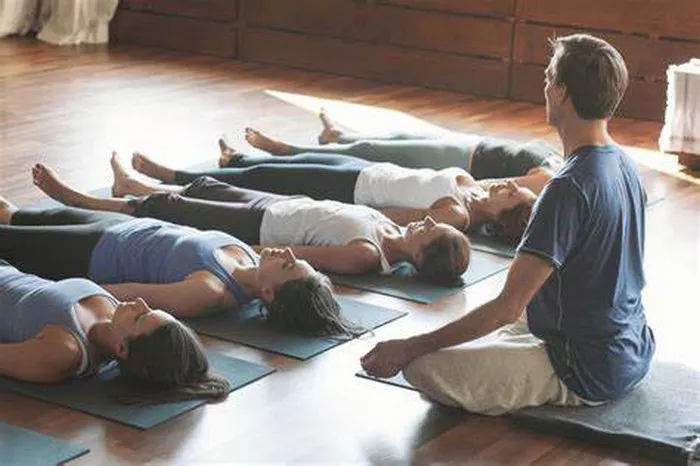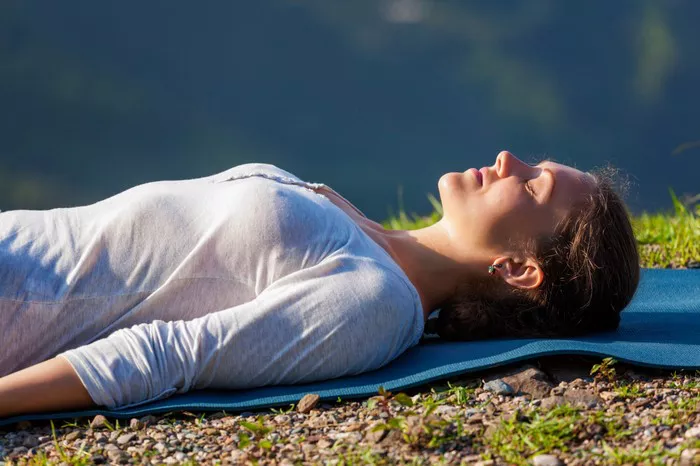Yoga is an ancient practice that has evolved over centuries, offering numerous asanas (poses) with a variety of health benefits. Among these poses, Tadasana and Mountain Pose often spark confusion for practitioners, especially beginners. These two poses are foundational to many yoga sequences, but despite their similarities, they have distinct differences in terms of execution, purpose, and benefits. In this article, we will explore the nuances of Tadasana and Mountain Pose, comparing them in terms of their posture, alignment, and effects on the body and mind.
Understanding the Essence of Yoga
Yoga is not simply about physical postures; it is a practice that integrates the mind, body, and spirit. The physical poses (asanas) are designed to improve flexibility, strength, balance, and concentration. Asanas are often performed in sequences that help to align the body, calm the mind, and cultivate a sense of overall well-being. Tadasana and Mountain Pose are frequently practiced in both beginner and advanced yoga classes, often forming the starting and ending positions of a flow.
Before delving into the comparison of Tadasana and Mountain Pose, it’s important to understand the origin of these names. “Tadasana” comes from the Sanskrit words “Tada,” meaning “mountain,” and “Asana,” meaning “pose” or “posture.” Thus, Tadasana translates to “Mountain Pose,” but the term may be used in different contexts within yoga. This brings us to the first point of distinction between these two poses.
Tadasana: The Foundation of Standing Poses
Tadasana is often referred to as the “Mountain Pose” in many yoga styles, but it holds a unique significance. It is the basic standing pose that sets the foundation for more complex asanas. Tadasana is often described as a pose of “strength, stability, and stillness.” While it may appear simple, its execution requires a deep awareness of body alignment and posture.
How to Perform Tadasana
To practice Tadasana, follow these steps:
Start Standing: Begin by standing with your feet hip-width apart, the inner edges of your feet parallel to each other.
Activate the Legs: Engage the quadriceps and lift the kneecaps slightly. Firm the legs and draw the thighs upward. Ensure that your feet are grounded and evenly distribute your weight between the balls of the feet and the heels.
Lengthen the Spine: Reach the crown of your head toward the ceiling, elongating the spine. Keep your chest open and your shoulders relaxed, moving them away from your ears.
Align the Pelvis: Engage the lower abdominals and slightly tilt your pelvis forward so that your body maintains a neutral alignment. Avoid arching your lower back excessively.
Arms and Hands: Your arms should be relaxed at your sides with your palms facing forward or inward. Extend through the fingers as you grow tall through the spine.
Breathe Deeply: Inhale deeply, expanding the ribcage and filling the lungs with fresh air. Maintain steady, mindful breathing throughout the pose.
Maintain Stillness: The key to Tadasana is maintaining a state of stillness and awareness. Stay grounded while mentally focusing on lengthening, balancing, and aligning the body.
Benefits of Tadasana
Although Tadasana may seem like a passive pose, it is incredibly powerful for building a strong foundation for other standing poses. The benefits include:
Improved Posture: Tadasana encourages optimal body alignment, improving posture and reducing the risk of back pain.
Core Activation: The engagement of the core muscles in Tadasana helps to build core strength, which is essential for balance and stability.
Increased Balance and Coordination: Practicing Tadasana helps you develop better balance by strengthening the legs and promoting awareness of how your body is positioned in space.
Mind-Body Connection: Tadasana fosters mindfulness, helping you connect the breath with movement and create a sense of presence.
Calms the Nervous System: By holding the pose with deep, conscious breathing, Tadasana can help calm the mind and relax the body, promoting mental clarity.
Mountain Pose: A Holistic Approach to Grounding and Energy
In many ways, Mountain Pose (Tadasana) is the essence of yoga practice. It is a pose that embodies a state of equilibrium—standing tall, grounded, and centered, yet free of tension. Mountain Pose is a highly symbolic posture that reflects the qualities of a mountain: strong, unwavering, and balanced. Despite the similarity in names, Mountain Pose can also refer to the visualization of a mountain, invoking its stability, resilience, and grounded nature. While Tadasana and Mountain Pose may seem like the same posture, the difference lies in the subtle nuances of how the pose is practiced and interpreted.
How to Perform Mountain Pose
Mountain Pose is often presented as Tadasana with specific emphasis on mindful intention and alignment. The following steps outline how to perform Mountain Pose with a deeper understanding of its principles:
Stand Tall and Centered: Begin by standing with your feet placed hip-width apart, parallel to each other. Engage your legs and activate the inner thighs to create stability.
Visualize the Mountain: Imagine that you are a mountain, firmly rooted into the earth with an unwavering foundation. Visualize the energy of the mountain rising up through your body, flowing through the crown of your head toward the sky.
Lift Through the Crown of the Head: As you reach upward, think of lifting not just your head but your entire body—imagine stretching every vertebra of the spine. Keep the spine straight, avoiding any forward or backward tilting.
Open the Chest: Gently roll the shoulders back and down, opening the chest and heart space. Keep the collarbones wide and relaxed.
Ground the Feet: Press your feet firmly into the ground, feeling the connection with the earth beneath you. Distribute your weight evenly between the balls of the feet and the heels, and lift the arches of your feet slightly to create a sense of lift.
Activate the Core: Engage the abdominal muscles to stabilize the torso. This will help keep the pelvis neutral and prevent overarching in the lower back.
Breathe Mindfully: Focus on your breath, taking slow, deep inhales and exhales. Imagine your breath as the flow of energy circulating through your body, connecting you to the present moment.
Benefits of Mountain Pose
Mountain Pose is more than just a physical posture; it is a state of mind and energy. The benefits of Mountain Pose include:
Grounding and Centering: Mountain Pose promotes a deep sense of grounding, helping practitioners feel centered, stable, and connected to the earth.
Improved Posture and Alignment: Like Tadasana, Mountain Pose encourages proper alignment, creating the foundation for healthy posture and reducing strain on the spine.
Balance and Strength: The pose builds strength in the legs, core, and upper body while enhancing balance. The engagement of the muscles improves overall coordination.
Heightened Awareness: Through focused attention on the body, breath, and energy flow, Mountain Pose cultivates heightened awareness of the present moment.
Mental Clarity and Calm: The pose serves as a meditation in stillness, calming the nervous system and fostering mental clarity and relaxation.
Key Differences Between Tadasana and Mountain Pose
At first glance, Tadasana and Mountain Pose appear almost identical. However, there are subtle but important distinctions:
Name and Interpretation:
Tadasana is the Sanskrit name for the posture, which literally translates to “Mountain Pose.” It refers to the basic standing posture that serves as the foundation for many other poses.
Mountain Pose can be interpreted as a state of being—strong, grounded, and unwavering. It is often associated with the broader energy of a mountain and may involve a more meditative, visualized approach.
Intent and Focus:
In Tadasana, the primary focus is on alignment and posture. It is a foundational stance that prepares the body for more dynamic asanas.
In Mountain Pose, the emphasis is often on visualization, energy, and mindfulness. It encourages a deeper connection to the earth and a sense of being present in the moment.
Execution and Subtle Adjustments:
Tadasana is often described with a focus on the physical execution—such as lengthening the spine, engaging the legs, and maintaining stillness. It is a static, controlled pose.
Mountain Pose, while similar in form, encourages a more holistic approach, including mental visualization and the embodiment of mountain-like energy. The pose may include more intentional grounding and energy flow.
Conclusion
Although Tadasana and Mountain Pose are often used interchangeably, they both offer unique contributions to your yoga practice. Tadasana provides the essential alignment and stability needed for a solid foundation, while Mountain Pose invites a deeper sense of mindfulness, balance, and connection to the earth.
Practicing both poses allows you to experience the physical and energetic benefits of standing tall and grounded, while also fostering mental clarity, strength, and resilience. Whether you are a beginner or an advanced yogi, incorporating Tadasana and Mountain Pose into your routine can improve posture, balance, and mindfulness—transforming both your physical practice and your overall well-being.
Through these poses, we are reminded that yoga is not just about performing movements, but about the journey of self-discovery and integration of mind, body, and spirit. Just like the towering mountains that have withstood the test of time, we too can find strength and peace within ourselves.
Related Topics:


























